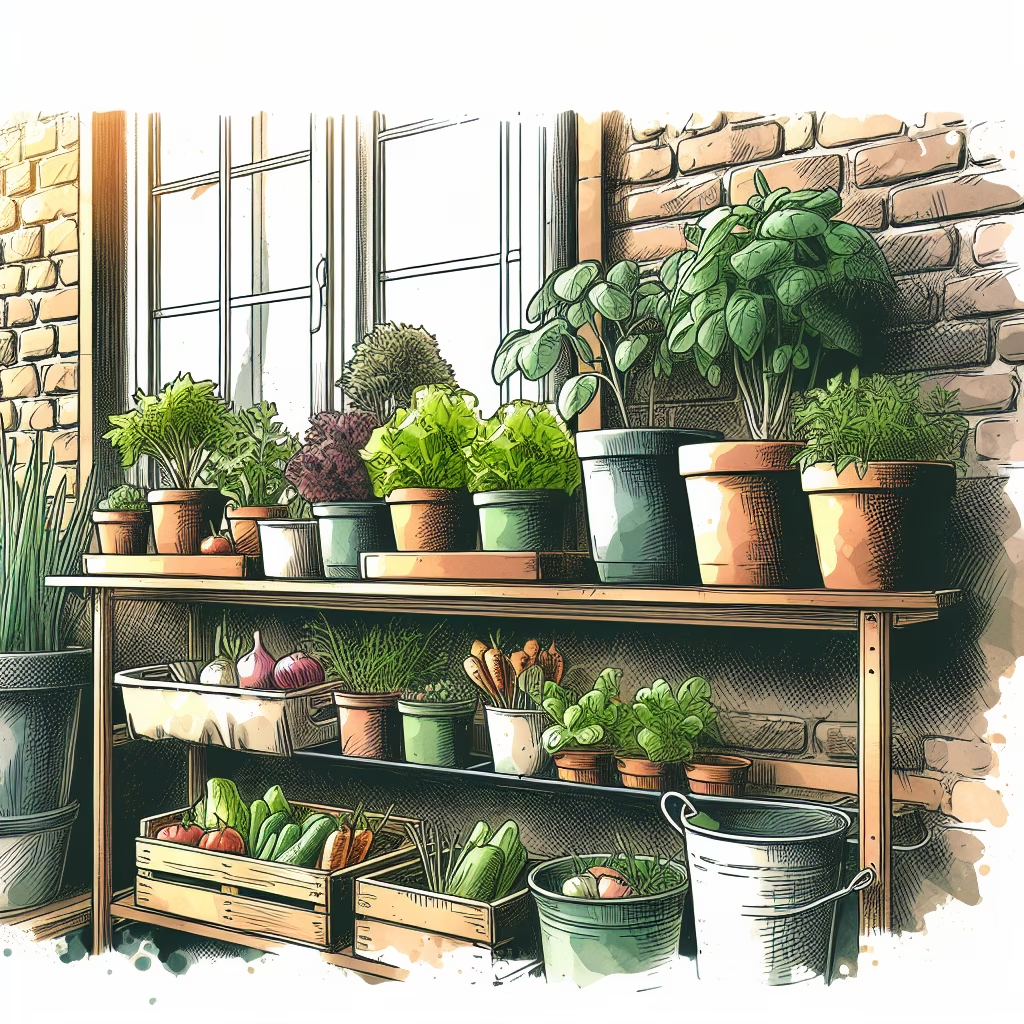Starting a vegetable garden in a small apartment may seem challenging, but with the right knowledge and a bit of creativity, you can grow fresh, healthy produce right at home. This guide will walk you through the steps, tips, and best practices to help you get started, even if you're limited on space.

Before you start, take a good look at your apartment to identify potential gardening spots. Look for areas that receive plenty of natural sunlight, such as windowsills, balconies, or even a sunny spot in your living room.
The type of containers you use will depend on the space you have and the vegetables you want to grow. Here are some options:
Tip: Ensure your containers have good drainage to prevent waterlogging.
Not all vegetables are suitable for indoor gardening. Choose varieties that are compact and can thrive in containers. Here are some recommendations:
Good Practice: Start with easy-to-grow vegetables to build your confidence.
Using the right soil is crucial for the success of your indoor vegetable garden. Here’s what you need to do:
Note: Some vegetables like carrots and radishes are best grown from seeds, while others like tomatoes can be started from transplants.
Once your containers and soil are ready, it's time to plant. Follow these steps:
Author’s Thoughts: Gardening in a small apartment can be incredibly rewarding. Not only do you get fresh produce, but it also adds greenery and life to your living space. Don’t be afraid to experiment and learn as you go.
Starting a vegetable garden in a small apartment is entirely possible with some planning and creativity. By assessing your space, choosing the right containers and vegetables, preparing the soil, and providing proper care, you can enjoy fresh, home-grown produce no matter how small your living space is.
Happy gardening!
You can also watch this video tutorial for a visual guide:
A comprehensive guide on how to create a budget for a small business, including step-by-step ...
Discover how to improve your website SEO in 2024 with this comprehensive guide. Learn about ...
Learn how to incorporate AI into your business strategies with this comprehensive guide. From choosing ...
This document provides a comprehensive guide on creating an effective social media content strategy for ...
Learn how to improve your website's SEO with the latest Google updates. This comprehensive guide ...
Learn how to set up a home automation system using smart devices in 2024 with ...